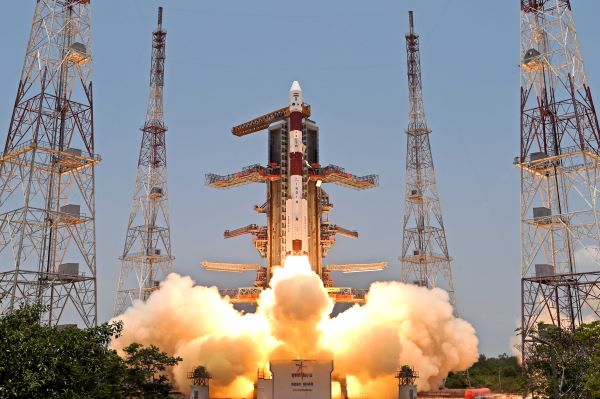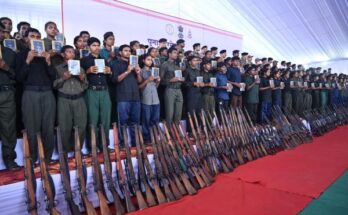
Team News Riveting
Sriharikota, September 2
As the ISRO’s trusted workhorse, the Polar Satellite Launch Vehicle (PSLV-XL) launched India’s first Solar Mission, – Aditya L1 from Sriharikota Range today, Union Minister Dr Jitendra Singh termed it as India’s “sunshine moment”.
“While the whole world watched this with baited breath, it is indeed a sunshine moment for India,” he said, addressing ISRO scientists and engineers at the Mission Control Room soon after the PSLV-C57 ejected Aditya L1 around 1 pm IST.
“Indian scientists had been working, toiling day and night for years and years together. But now comes the moment of vindication, the moment of redeeming the pledge to the nation,” said Dr Jitendra Singh, Union Minister of State (Independent Charge) Science & Technology; MoS PMO, Personnel, Public Grievances, Pensions, Space and Atomic Energy.
Dr Jitendra Singh thanked the Prime Minister Shri Narendra Modi for making this happen “by opening up new vistas for India’s space sector and telling us that sky is not the limit.”
“Thanks also honourable PM for giving us the confidence, the courage and the conviction to reach out to the stars and to discover the mysteries of universe beyond. And thanks also for making us realise the enormous potential of our space fraternity,” he said.
“Coming close on the heels of successful Chandrayaan-3 landing, the successful launch of Aditya L1 is also a testimony to the ‘whole of science and the whole of nation’ approach in which we have sought to adopt in our world culture,” said Dr Jitendra Singh.
“While ISRO is credited in executing this vision, the science institutes across the country have come forward to contribute in one form or the other, in small way or big, to this vision. To name a few, – The Indian Institute of Astrophysics, Bengaluru, the National Aerospace Laboratories, the Tata Institute of Fundamental Research, Mumbai, the NGRI Nagpur, IIT Kharagpur, IIT Madras, IIT Delhi, IIT Mumbai, and the list is too long,” he added.
Calling it as a team effort, Dr Jitendra Singh termed the Aditya L1 launch as “a day of reckoning”.
“This day, the 2nd of September 2023, is a day of reckoning when we move on into the next 25 years of AmritKaal and Mother India pledges, with the collective will and collective effort of our 140 crore children, to reach and occupy the place of pride on the world pedestal,” he said.
Earlier, ISRO confirmed the launch of Aditya-L1 by PSLV-C57 is accomplished successfully with the satellite placed “precisely” into its intended orbit. With this, India’s first solar observatory has begun its journey to the destination of Sun-Earth L1 point.
With its solar panels deployed, the Aditya-L1 started generating the power, said ISRO.
Aditya L1 is the first space-based Indian mission to study the Sun. Through various orbit raising manoeuvres and the cruise phase over about the next four months, the spacecraft shall be placed in a halo orbit around the Lagrange point 1 (L1) of the Sun-Earth system, which is about 1.5 million km from the Earth.
A satellite placed in the halo orbit around the L1 point has the major advantage of continuously viewing the Sun without any occultation/eclipses. This will provide a greater advantage of observing the solar activities and its effect on space weather in real time.
The spacecraft carries seven payloads to observe the photosphere, chromosphere and the outermost layers of the Sun (the corona) using electromagnetic and particle and magnetic field detectors.
Using the special vantage point L1, four payloads directly view the Sun and the remaining three payloads carry out in-situ studies of particles and fields at the Lagrange point L1, thus providing important scientific studies of the propagatory effect of solar dynamics in the interplanetary medium.
The Aditya L1 Mission is expected to provide the most crucial information to understand the problem of coronal heating, coronal mass ejection, pre-flare and flare activities and their characteristics, dynamics of space weather, propagation of particles and fields etc.



